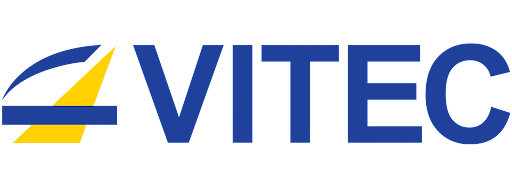ATLANTA - May 6, 2025 - PRLog -- Financial trading floors are built on speed, but many firms are relying on outdated video technology that may be costing them millions.
As markets move in fractions of a second, legacy video systems introduce costly delays, limit access to critical data, and complicate compliance with financial regulations. Experts say modern internet protocol (IP) video solutions offer a way forward, enabling real-time decision-making, improved transparency, and scalable global operations.
"Some systems introduce 5-10 seconds of latency due to the way they buffer and package video," said Steven Forrest, Director of Business Strategy & Industry Innovation at VITEC in a vidcast interview for journalists. "In trading, that's a massive problem. If your traders are seeing information even a few seconds later than competitors, they're already behind."
The Cost of Latency in Trading
Financial firms operate in high-speed, high-risk environments, where a single second of delay can mean millions in missed opportunities. Traders rely on breaking news updates, regulatory alerts, and live market feeds to make split-second decisions. However, traditional coaxial video systems—still used in many institutions—introduce latency that makes real-time trading nearly impossible.
A report by the Securities and Exchange Commission highlights that latency significantly impacts algorithmic trading performance, emphasizing the need for low-latency systems to maintain a competitive edge.
Legacy systems that were designed for a different era, when video was primarily used for broadcast news, corporate messaging, and internal training cannot keep up with today's performance requirements. With the stakes so much higher today a growing number of firms now require ultra-low-latency solutions to keep up with automated trading algorithms, AI-driven financial models, and a 24/7 global trading cycle.
"If traders receive breaking news even a second too late, they're already out of the game," Forrest said. "Modern IP video solutions eliminate that risk."
Compliance Risks in Outdated Video Systems
Regulatory scrutiny in financial markets is also at an all-time high. From the U.S. Securities and Exchange Commission (SEC) to the European Securities and Markets Authority (ESMA), regulators demand transparency in how financial firms access and act on market information.
However, many traditional video systems lack compliance visibility, making it difficult to verify whether traders received required updates before executing high-value trades. This documentation gap can expose firms to regulatory fines, internal investigations, and reputational damage.
According to a recent study by Deloitte, outdated technology infrastructures can hinder compliance efforts, making it challenging for firms to meet evolving regulatory standards.
"With modern IP video, we can track what content was shown, when it was seen, and who watched it," Forrest said. "This is invaluable for compliance teams ensuring traders are reacting to public data—not engaging in insider trading."
Ensuring Reliability with Automated Failover Switching
Beyond regulatory tracking, IP video enhances system reliability. To ensure resiliency and availability trading firms are implementing automatic failover switching enabled by advanced IP systems. As a result, when cable-based video feeds go down, the IP streams are able to instantly switch to backup systems -- such as satellite or cellular networks -- to ensure traders never lose access to market-critical news.
"The ability to maintain a continuous, verifiable information flow is just as important as speed," Forrest said. "It is not just good for business, but also to stay out of trouble. A compliance violation can come from something as simple as missing an update that was lost due to system failure."
Verifiability is also important, and an area in which legacy coaxial video do not measure up. Advanced IP video solutions provide automated logs of content access, offering an auditable record that helps firms comply with SEC, FINRA, and MiFID II regulations. This real-time tracking strengthens regulatory defenses while offering valuable insights into how video content is consumed across trading floors.
A Global Industry Needs a Global Solution
Big financial institutions rarely operate from a single location. Major investment banks, hedge funds, and asset managers have trading operations in New York, London, Hong Kong, Singapore, and beyond. However, many still rely on localized video infrastructures, creating fragmented, disconnected networks that hinder real-time coordination.
It is a situation that requires scalable, cloud-driven solutions that enable seamless video distribution across global offices.
"The modern trading floor isn't just in one building—it's in multiple countries," Forrest said. "Financial firms need a video solution that integrates every location into a single, high-performance system."
The shift toward AV-over-IP and IPTV integration is already underway, streamlining enterprise video management and removing the bottlenecks associated with outdated video technology.
"The firms that are ahead of the curve are already adopting these technologies," Forrest said. "Those that wait too long may find themselves struggling to catch up."
For firms still operating outdated video infrastructure, the question isn't whether they should upgrade—but how much longer they can afford not to.
ENDS
[EDITORIAL NOTE: To listen to the full interview with VITEC's Steven Forrest, click here]
Photos: (Click photo to enlarge)

Source: VITEC
Read Full Story - Why Legacy Video Is Costing Financial Firms Millions — And How to Fix It | More news from this source
Press release distribution by PRLog
Why Legacy Video Is Costing Financial Firms Millions — And How to Fix It
May 06, 2025 at 14:06 PM EDT





